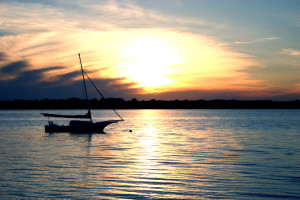Sailing Basics
When learning how to sail, future skippers should exercise common sense and observe safety procedures to have a good time on the water. Starting out in calm and uncrowded waters allows a skipper to become acquainted with sailing basics. Being able to practice sailing techniques in light winds with few others around will give one confidence later on in the water. Choosing a small boat rigged with only one sail will make things easier, and a smaller boat will respond quicker while being easier to maneuver.
Other basic safety precautions to take before sailing include letting another person know when and where you will be sailing, having flotation devices available and if possible knowing how to swim. Checking the weather forecast is also important when learning how to sail. Being prepared for anything is a must when out on the sea. Storms can arise quickly, and weather conditions can deteriorate rapidly and develop into very unforgiving scenarios. Knowing the wind and tide conditions can also help prevent disaster. Even if the weather forecast is good, always bring enough provisions on board just in case. It’s always better to have something and not need it than to need it and not have it.

Knowing how to adjust and control the sail is a must. Those who can use a sail to maximize boat performance can let the wind and water do much of the work. In light or strong winds sails should be flat, while in moderate winds sails should be full. Smart sailors are also aware of the boom. Knowing when it’s about to swing can be the difference between staying on the boat, being knocked overboard or sustaining a nasty bump on one’s head. Finally, beginning sailors should practice capsizing. While this sounds dangerous, under controlled conditions it’s very safe. Using a small boat will help sailors prepare for the worst.
So with lots of practice and study, sailing can be a hobby that a person can enjoy for many, many years either alone or with others.
For more information click: How to sail – sailing basics